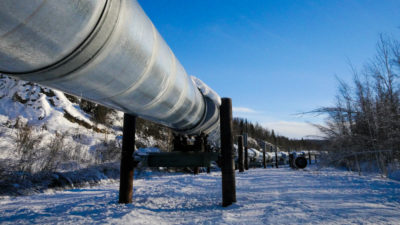Colombia’s largest independent oil producer, Canadian-domiciled Pacific Rubiales (TSX: PRE), continues to be punished by the market for perceived weaknesses in its operations and the sustainability of its production. Already over the last year, its share price has plunged 19%, with the market growing increasingly concerned over the loss of its flagship Rubiales field in Colombia’s Llanos Basin.
The company has also been beset by a range of operational problems, with earnings continuing to be hit by a softening Colombian peso, leaving the market to assume the worst. But contrary to popular belief, Pacific Rubiales continues to report solid operational results, showing that the company is in great health and that the market’s negative perception is overblown. This could be a good opportunity for risk-tolerant investors.
Strong performance despite missing analysts’ forecasts
Negative sentiment surrounds Pacific Rubiales because it missed the consensus forecast for earnings for the first quarter by 14%, reporting earnings per share of $0.38. This represents a 19% decline in the company’s bottom line compared to the previous quarter, but a 6% increase compared to the equivalent quarter in 2013.
However, Pacific Rubiales did report some strong operational results, with crude production up a healthy 11% quarter over quarter and 16% year over year to 148,827 barrels of oil daily. This is almost 1% higher than the bottom end of the company’s 2014 production guidance and bodes well for it to hit its guidance target.
This growth allowed Pacific Rubiales to take full advantage of higher realized oil prices during the quarter, boosting revenue by 7% quarter over quarter and 2% year over year. As a result, EBITDA — a key measure of core profitability — shot up 10% compared to the previous quarter and 2% year over year, giving the company an impressive EBITDA margin of 55%.
Even better, the profitability of Pacific Rubiales’ operations remains high, with the company’s operating netback jumping a healthy 7% quarter over quarter and 5% year over year to $63.80 per barrel. One reason for this significant increase in netback was the successful implementation of a number of cost-optimization strategies. These strategies saw operating costs fall 5% compared to the previous quarter and a massive 18% compared to the first quarter of 2013.
Furthermore, Pacific Rubiales has one of the highest operating netbacks of any oil company domiciled and listed in Canada. Its netback is significantly higher than the average for oil producers operating in North America of $42 per barrel.
It is superior to Vermilion Energy’s (TSX: VET)(NYSE: VET) netback of $63.20, fellow Colombian operators Parex Resources’ (TSX: PXT) $62.70, Crescent Point Energy’s (TSX: CPG)(NYSE: CPG) $52.65, and Whitecap Resources’ (TSX: WCP) $45.80.
Both Vermilion and Parex enjoy the advantage of having a significant portion of their oil sales being benchmarked to Brent crude, which trades at a premium to WTI. Pacific Rubiales’ crude prices are benchmarked to WTI, proving the efficiency of its operations.
Acquisitions and development form a sustainable revenue stream
One of the market’s greatest fears concerning Pacific Rubiales is the loss of its share of the flagship Rubiales field in June 2016. This field makes up around 59% of the company’s total crude production and 21% of its oil reserves. But several acquisitions and ongoing development of its existing assets have given the company a clear path to replacing both lost production and reserves. Pacific Rubialies continues to make a number of acquisitions to boost its exploration and development portfolio, taking a 50% interest in Petronova’s (TSX: PNA) Tinigua block in Colombia.
Pacific Rubiales is also continuing to evaluate the commercial viability of its STAR technology, which, if successful, would increase oil production and recovery rates, thus boosting oil reserves.
The company also remains focused on investing in Colombian oil infrastructure. It has a 43% equity interest in the Bicentario Pipeline, which is currently under construction. It is also constructing a new electricity transmission line connecting the Rubiales field to Colombia’s electrical grid through a wholly owned subsidiary.
These infrastructure developments are particularly important due to the lack of oil infrastructure in Colombia, and will allow Pacific Rubiales to not only enjoy cost savings through its ownership, but also generate an alternative source of revenue.
It’s undervalued compared to its peers
Despite its solid operational performance, growing diversified revenue streams, and firm plan to replace the oil reserves and production lost when its lease on the Rubiales field expires, Pacific Rubiales remains undervalued. It is trading with an enterprise value that is a mere four times EBITDA and 20 times its oil reserves, coupled with a price-per-flowing-barrel of $71,000. A number of its peers appear expensive in comparison.
This includes Vermilion, with an enterprise value of 10 times EBITDA and 43 times its oil reserves, and Crescent Point, with an EV of nine times EBITDA and 32 times its oil reserves. Both also have significantly higher-prices-per-flowing-barrel at $183,000 and $189,000 respectively.
Clearly, Pacific Rubiales is continuing to fire on all cylinders. Despite its solid operational performance, quality assets, and attractive valuation, it remains under-appreciated by the market. Now is the perfect time for risk-tolerant investors seeking to diversify their oil portfolios to consider investing in this company.







